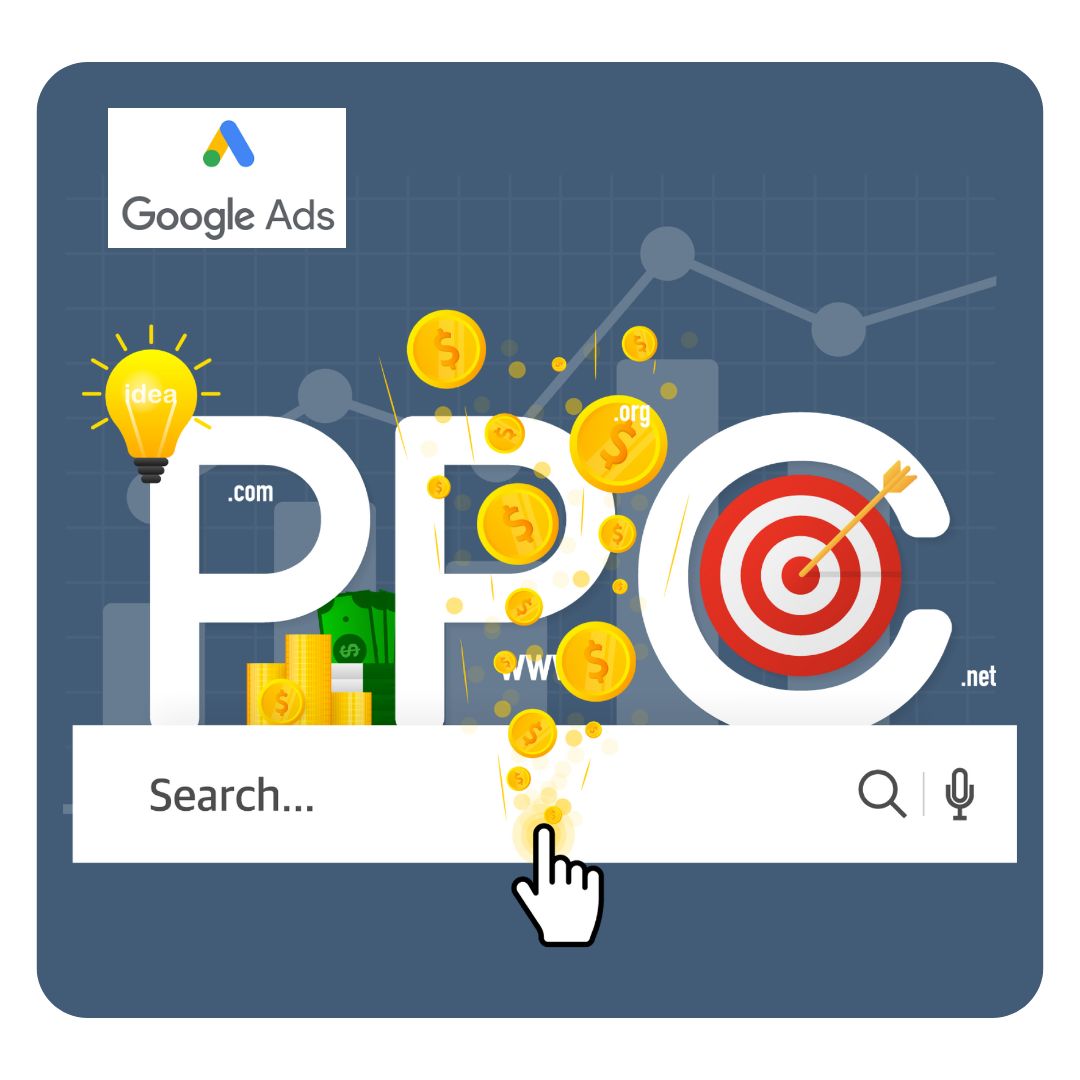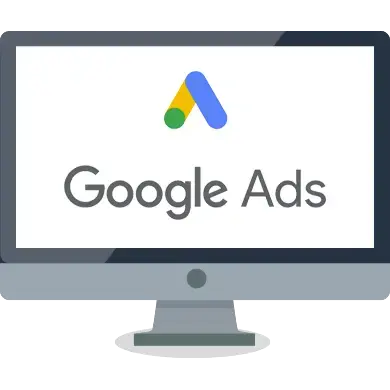Google Ads Agency Explained: Services, Costs & If It’s Worth It
Unlock Your Growth: How a Google Ads Agency Can Supercharge Your Lead Generation Are you pouring money into Google Ads but not seeing the leads you...
11 min read
 Johanne
:
May 22, 2024 7:46:28 PM
Johanne
:
May 22, 2024 7:46:28 PM

Uncover the nitty-gritty of Google Ads with our easy-to-follow guide
 Google Ads is an online advertising platform developed by Google. It allows businesses to create and display ads on Google's search engine results pages. Understanding how Google Ads works is essential for running successful advertising campaigns.
Google Ads is an online advertising platform developed by Google. It allows businesses to create and display ads on Google's search engine results pages. Understanding how Google Ads works is essential for running successful advertising campaigns.
Google Ads is a pay-per-click (PPC) advertising platform where advertisers pay per click (or impression) on an ad.
Google Ads is a powerful tool for attracting potential customers who are actively seeking products or services like yours. By utilising Google Ads, you can generate more leads and inquiries and drive traffic to your website.
Over time, Google Ads will also help you analyse and optimise those ads to generate even more leads.
Google is widely recognised as the leading search engine, with millions of users conducting searches every day. Moreover, Google Ads has established itself as a reputable and influential tool in the realm of paid advertising for almost two decades.
Let's take a closer look at the important players in the Google Ads process: the searcher, the advertiser, and the Google Ads platform. Each plays a crucial role in ensuring that Google Ads effectively connects businesses with potential customers, helping them find products and services that meet their needs. Here's a view of how it all works;
Bidding on keywords is how advertisers let Google know which keywords they want their ads to appear on the Search Engine Results Page (SERP). Keyword bids can range from a few cents to hundreds of dollars per keyword. Advertisers typically set a daily budget that is used to fund individual keyword bids.
Additionally, no matter your business size or available resources, you can tailor your ads to suit your budget. The Google Ads tool allows you to stay within your monthly cap and pause or stop your ad spending at any time.
Next, the potential customer searches for a keyword an advertiser has bid on. On the SERP, they'll see ads for products or services that closely align with the intent of their query. The order of the ads they see largely depends on ad rank.
Between the time it takes for the user to type their search into Google's search bar and the moment the SERP for that keyword appears, Google works quickly in the background to perform a process called ad rank.
Within seconds, Google ranks advertisers in position one through the total number of ad spaces available on the search engine results page (SERP). They use keyword quality score and the amount the advertisers have bid on the keyword to determine who gets the number one spot, number two, three, and so on.
Once the customer sees the ads for the keyword they searched for, they may decide to click on one that best matches their search intent.
From there, they may decide to make a purchase or return to the SERP and click on another ad or an organic SERP result. They may also end the search without a click or a purchase.
 1. Bidding
1. BiddingGoogle Ads operates on a bidding system in which advertisers choose a maximum bid for a click on their ad. The higher their bid, the better their ad placement. You have three bidding options: CPC (cost-per-click), CPM (cost per mile), or CPE (cost per engagement).
Your AdRank plays a vital role in determining where your ad will appear. The higher the value, the greater the visibility your ad will receive, increasing the likelihood of users clicking on it. AdRank is calculated by multiplying your maximum bid by your Quality Score.
Your Quality Score evaluates the quality of your ad based on factors such as your click-through rate (CTR), keyword relevance, landing page quality, and past performance on the SERPs. QS plays a crucial role in determining your AdRank.
Pay-per-click, or PPC, is the most common type of advertising where advertisers pay for each click on an ad. While PPC is not exclusive to Google Ads, it is crucial to grasp its fundamentals before initiating your initial Google Ads campaign.
Ad Extensions are a fantastic way to enhance your ad with extra information without any additional cost. These extensions are categorised into Sitelink, Location, Call, Offer, or App options.
A higher CTR indicates that your ad effectively aligns with search intent and targets relevant keywords, showcasing its quality.
When starting a paid campaign on Google Ads, you can choose from seven different campaign types: search, smart, display, video, shopping, performance max or app campaigns.
CVR measures the number of form submissions in relation to the total visits on your landing page. In simpler terms, a high CVR indicates that your landing page delivers a smooth user experience that aligns with the promise made in the ad.
Each time your ad appears on the Search Engine Results Page (SERP), it garners an impression. Some advertisers and marketers refer to this as the number of views on the ad.
Impressions make up one-half of the CTR equation we mentioned above.
You can leverage this data from impressions to analyse the number of users who interact with your ad and optimise it for a higher CTR.
Keep in mind that converting all impressions into clicks and achieving a 100% CTR is nearly impossible. Users may navigate away from the SERP (zero-click search), click on a competitor’s ad, or opt for an organic search result over clicking on your ad.
When a user types in a search query on Google, the search engine displays a range of results that match the user's intent. Keywords play a crucial role in this process, as they are the essential words or phrases that align with what the user is searching for and fulfil their query. By selecting the right keywords, you can ensure that your ad appears alongside relevant search queries. For instance, if a user searches for "how to blend spices" advertisers targeting keywords like “house spice blend” and “herbs and spices” will have their ads displayed.
Negative keywords are a list of keywords you do not want to rank for. Google will pull you from the bid on these keywords. Typically, these are semi-related to your intended search terms but fall outside of the realm of what you offer or want to rank for.
Google ads can be displayed on either search results pages or a web page within Google’s Display Network (GDN). GDN is a network of websites that provide space on their web pages for Google Ads. These ads can be either text- or image-based and are shown alongside content related to your target keywords. Popular options for Display Ads include Google Shopping and app campaigns.
Effective keyword research is essential for both paid ads and organic searches. Your choice of keywords must align closely with the searcher's intent to ensure that Google matches your ad with relevant search queries.
When creating ad groups within your campaign, it is recommended to focus on a small set of keywords, ideally one to five. Google will then showcase your ad based on these carefully selected keywords.
AdRank plays a crucial role in determining where your ads appear. It is calculated using a formula that considers your Quality Score and the bid amount placed on a keyword.
Quality Score is assessed based on the relevance and quality of your ad. Google measures this by analysing how many users click on your ad when it is displayed - in other words, your CTR. The effectiveness of your ad in matching searcher intent is key, and you can gauge this by considering three main factors.
Focusing on your quality score is crucial when setting up your initial Google Ad campaign. By prioritising your QS, you can lower your acquisition costs and secure better ad placement without increasing your spending.
Match Types provide flexibility in selecting keywords, allowing you to specify how closely you want your ad to match a search query. There are four match types available to choose from:
If you are new to this and unsure about your target audience's search behaviour, consider shifting from a broad match to a more focused approach. This will allow you to test different queries and determine which ones generate the best results. Closely monitor your ads and make adjustments as you gather more insights.
When setting up your Google ad, you must choose the geographic area where your ad will be displayed. If you have a physical store, focus on targeting a specific radius around your location. If you run and operate an e-commerce store with physical products, target areas where you ship. And if your services or products are available globally, that would be good for you; the possibilities are endless!
Your location settings are crucial for determining where your ad will appear. For example, if you run a coffee shop in Melbourne, someone searching for a "coffee shop" in Sydney won't see your ad, regardless of your AdRank. This is because Google prioritises showing the most relevant results to searchers.
 Once you have your copy and graphics for the ad prepared, setting up your Google ad is straightforward.
Once you have your copy and graphics for the ad prepared, setting up your Google ad is straightforward.
Your advertisements serve as spokespersons for your products and services. The more pertinent and captivating they are to your audience, the more likely they are to yield leads and positive business outcomes.
To swiftly assess the performance of your ads, you can organise them by click-through rate or conversion metrics, similar to how you would with keywords. This allows you to easily identify which ads:
Your ads should appeal to customers and accurately describe your offer. Follow these best practices to make sure your ads are optimised:
Customers tend to be naturally attracted to ads that match their search queries. Ensuring your ad text, especially the headline, closely aligns with your keywords can grab the attention of those looking for relevant terms.
It's crucial to categorise your keywords by theme or product instead of lumping them all together. This strategy allows you to create ads tailored to each specific theme, increasing the chances of piquing the interest of potential customers. The closer your ads and keywords are aligned, the more appealing they will be to your target audience.
Your landing pages are crucial for converting clicks into customers. Landing pages are simply single stand-alone web pages dedicated to capturing leads. When users click on your ad, they anticipate landing on a page that aligns with the ad content. If they don't find what they're looking for immediately, they are more likely to navigate away.
Select a landing page that aligns seamlessly with your ad and keywords. For instance, if your keyword is "discount office stationery" and your ad offers office stationery at 15% discount, customers should easily locate and purchase stationery at the discounted price on your landing page.
It can be hard to capture everything that you want to say about your business in a single text ad. That's why you should write different versions of your ad.
In each ad, try using different headlines or description text. For example, you could experiment with:
Encourage customers in your ad text to take the desired action on your site. A clear and compelling call-to-action guides customers on what to expect and nudges them towards the intended action.
Ensuring that your call-to-action aligns closely with your keywords and landing page increases the likelihood of a conversion. By selecting the appropriate action phrase, you can avoid paying for clicks that are less likely to result in business for you.
If you have a unique offer, make sure to highlight it for your customers. For instance, you could showcase a end of year discount, access to lifetime pricing, or a bundle of products and services at an attractive price point. Drawing attention to specific prices or promotions can sway someone's decision to click on your ad. Setting your business self apart from competitors increases your chances of appealing to potential customers.
Utilising ad assets is a great way to draw in more customers to your ad. These assets include additional business information such as an address, phone number, store rating, or additional web page links. Incorporating ad assets can enhance the visibility and click-through rate (CTR) of your ad.
Ad extensions are additional pieces of information that can be added to ads to provide more context and increase visibility. Examples of ad extensions include call extensions, sitelink extensions, and location extensions.
By utilising ad extensions effectively, businesses can enhance the appearance of their ads and provide more value to potential customers.
Measuring success with Google Ads involves tracking key performance indicators (KPIs) and analysing the data.
Common metrics to measure include click-through rate (CTR), conversion rate, and return on ad spend (ROAS).
Consistently monitoring and assessing ad performance allows businesses to make informed decisions and enhance their campaigns for superior outcomes. By integrating your ads with Google Analytics, you can track vital metrics such as page popularity, the top-performing keywords, and more.
Analysing these metrics will enable you to enhance the effectiveness of your ads, increase conversions, and ultimately boost revenue over time.
1. It is crucial to have a robust list of negative keywords.
2. Match Search Intent to Keyword Trigger to Ad Copy to Landing Page copy.
3. Your Landing Page should ideally only have one Call To Action - Call, Purchase, Form Fill, etc.
4. Capture - ensure all contact information from form fills gets captured in your CRM.
5. CRM - An effective and well used CRM together with a responsive sales team is essential. "Speed to lead" is important to convert leads to customers.
6. Lag time - understand the time it takes from click to purchase for your promoted items and make sure to closely examine how your campaigns are impacted by the varying lengths of time it takes for your ad spend to result in conversions.
Google Ads is a highly effective platform for sponsored advertising, providing access to a wide range of advertising options and reaching potential customers on one of the largest search engines globally.
It's essential to focus on utilising Google Ads to boost visibility, increase awareness, and achieve your advertising goals. Otherwise, you risk wasting your budget on clicks that don't bring value to your business.
To maximise your growth, make sure your Google Ads messaging aligns with your other business development and sales activities. Additionally, consider running email campaigns and social media outreach (using automated tools like Expandi (for LinkedIn automation) to enhance your results even further.

With Google Ads, you have full control over your budget.
There is no minimum spend required, and you can easily set limits for monthly, daily, and per ad spending.
You only pay when someone clicks on your ad.
You need to meet your prospects and customers where they are spending time.
Google Ad appear at the perfect moment and location throughout the extensive Google ecosystem.
Google's AI can discover your top-performing ad formats to optimise conversions and delivery more leads and more sales
Whenever you come across an ad for a company’s landing page ranking high in a Google search, chances are they have a Google Ads campaign running.
Google Ads is a powerful tool for generating leads. When your campaigns are optimised effectively, they can drive highly targeted leads to your website (landing Page) or opt-in form.
With Google Ads, you have the opportunity to target individuals actively seeking what your business provides. This allows you to fine-tune your searches, ensuring that only potential customers interested in purchasing your products or services are directed to your website through this platform.
From Lead Generation Campaigns, Go To Market Strategy, defining Ideal Customer Profile, Pricing and Packaging review and Sales Process audit, we guide you on what to do and how to do it.
Get the best possible results and accelerate your growth by combining a mix of key growth strategies (Google Ads, email campaigns and social selling, automation and AI) with our "done for you" service.
Get in touch for an obligation-free chat to find out how this could work for your business.
How to Win More Customers With Online Marketing and Advertising
6 reasons why you should use Google Ads
Google article | Benefits of online advertising and Google Ads
Complete Guide to Generating B2B Leads
Boost your website performance with HubSpot's website grader

Unlock Your Growth: How a Google Ads Agency Can Supercharge Your Lead Generation Are you pouring money into Google Ads but not seeing the leads you...

Attracting and securing new clients can be a challenge for Professional Services firms, but it doesn't have to be. Discover how a specialised PPC...

How do IT Services firms expand their customer base and acquire new customers? And how do they find the 10% of companies that are ready to buy?